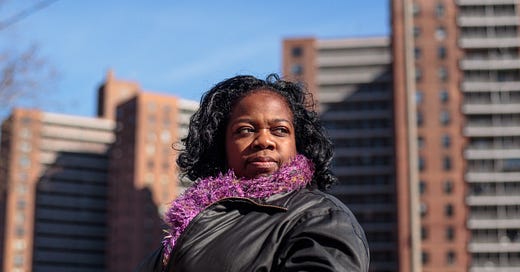Life and Death in Lefrak City
In a bleak apartment complex beside the Long Island Expressway, three families struggle to protect their children from a cycle of violence that proves inescapable.
When Debra Greene’s son Theodore was in middle school and he and his younger brother Pernel misbehaved, she would pack the boys into her car and drive from Corona, Queens, across the Triboro Bridge to a rough neighborhood in Harlem, threatening to leave them there if they didn’t shape up. When a homeless man knocked on the car window, the boys cried, but Greene was grateful that the man was reinforcing her mission. She was determined to do whatever she could to keep her boys out of trouble.
“I drove them to a school with bars on the windows and said, ‘This is where you will go to school,’” recalls Greene, fifty-two. Though she is tired from working a long shift in the ICU and from the challenges this past year has presented her with, she erupts into laughter as she retells stories of her kids growing up. “During the day it doesn’t look so bad, but at night?”
But crime wasn't confined to neighborhoods away from home. The family lived in Lefrak City, a housing d…
Keep reading with a 7-day free trial
Subscribe to Narratively to keep reading this post and get 7 days of free access to the full post archives.




